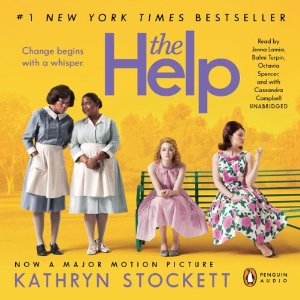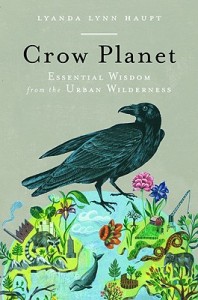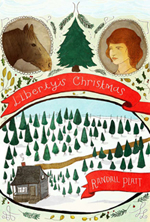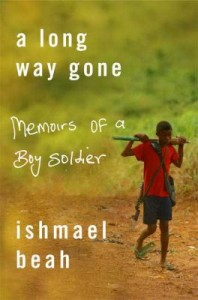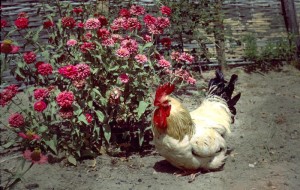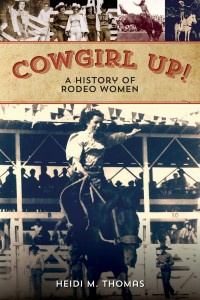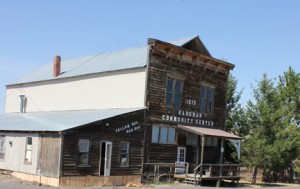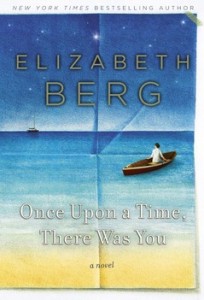
The Hibulb Cultural Center & Natural History Preserve is a fascinating museum located on the Tulalip Reservation adjacent to the city of Marysville, Washington, 34 miles north of Seattle. Hibulb (pronounced Hee-bolb) is resplendent with tribal folk lore, carving, weaving, knitting, and sculpture.
The center is named for the large village of Hibulb that was at the end of a bluff overlooking Puget Sound. Warriors who lived in longhouses at Hibulb protected their people from invasion of their territories. From Hibulb, they could see enemies approaching from a long distance and they would light a huge signal fire to warn the other villages and longhouses across the bay and up the Snohomish River.
Tulalip Tribes, the People of the Salmon, are a federally recognized tribe of Duwamish, Snohomish, Snoqualmie, Skagit, Suiattle, Samish, and Stillaguamish people. The 22,000-acre Tulalip Reservation was established in 1855 by a treaty that guaranteed hunting and fishing rights to all tribes represented by the signers. In return for the reservation and other benefits promised in the treaty by the United States government, the Duwamish Tribe exchanged over 54,000 acres of their homeland which includes much of modern-day King County.
Today the Tulalip Reservation is thriving with businesses that serve more than 6 million visitors a year and is one of the largest employers in Snohomish County.
The Hibulb Cultural Center, which opened in 2010, is located on a 50-acre natural history preserve. The 23,000-square foot structure features a main exhibit, a revolving temporary exhibit, two classrooms, a longhouse, a research library and a gift shop. The Center provides an introduction to these Northwest tribes, their culture and history.
The exhibits of the Hibulb Cultural Center may be viewed on a self-guided tour, but we had the pleasure of joining a group guided by Lois, a tribal member who is knowledgeable and informative. We met first in the cedar Longhouse which is built into the museum, I learned that not all Indians were teepee dwellers. The Tulalip peoples lived in longhouses, each of which might house 14 to 20 families. Tribal meetings were held in the longhouses and even today it is an important center where teachings and traditions are passed from generation to generation.
The Tulalip have a binding relationship to cedar and salmon. At the Center, visitors learn how weaving, fishing and cooking defined their culture. The cedar tree is considered a gift to serve throughout one’s life. Every part of the tree is used with nothing wasted. It is a perfect resource, providing everything from baskets, bowls, cloth, and canoes, to long-lasting carvings.
The Tulalip are a fishing people. The Cultural Center has a display showing fishing gear, traps and techniques. Also shown is a “summer house” where they lived while fishing, hunting, gathering berries, etc.
Formal education began at Tulalip in 1857 with a Catholic priest, Father Chirouse, who taught English, reading, spelling, history and math. He himself was a student of theirs as he learned to speak one of the local dialects, Lushootseed. Father Chirouse was revered by the Tulalip people and later became an Indian Agent and the voice of the people.
A sad period in the history of the Tulalip as well as many Indian tribes, is when, in the 1800’s, the U.S. Government required all native children to leave their homes and stay in boarding schools. In an attempt to “civilize” the children, they were forbidden to speak their native language, practice their own religion and beliefs, or wear their accustomed clothing. The children were allowed little contact with their own families. Father Chirouse’s school was closed and replaced by a more military-style education. The result of total immersion into the white man’s world caused the old customs and native languages to become nearly extinct.
Most of the languages have been restored, thanks to the elders who still remembered and who realized their culture was in danger of vanishing. Ancient languages were not written languages, but with dedicated effort, ways of writing the sounds have been found and, with great effort, many of these “lost” languages have been reinstated.
At the Cultural Center, many walls are decorated with small plaques of men and women who have served with the United States Armed Forces. Each wall acknowledges a particular war or period served. The Tulalip Tribes Veteran’s Department has combined forces with other veteran programs to help provide services for returning warriors.
A special exhibit, Coast Salish Canoes, will be on display until June, giving visitors an opportunity to learn about different types of canoes, their construction, and important canoe carvers. The display shows the canoe travel routes in Puget Sound and traditional canoe-based gatherings ranging from canoe races to festivals and journeys. Following a time-line approach, the display shows the history of canoes to present day.
Plan on spending some time at Hibulb Cultural Center. Although it can be self-guided, I recommend joining a guided tour. The short stories and anecdotes are fascinating and informative. To learn more about the Center, visit http://www.hibulbculturalcenter.org/
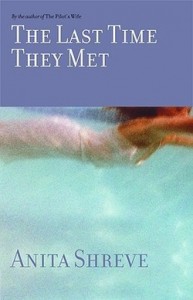 Clear your calendar for a couple of days and read Anita Shireve’s The Last Time They Met (Little, Brown and Company). Pour yourself a cup of coffee and settle in for a treat.
Clear your calendar for a couple of days and read Anita Shireve’s The Last Time They Met (Little, Brown and Company). Pour yourself a cup of coffee and settle in for a treat.

